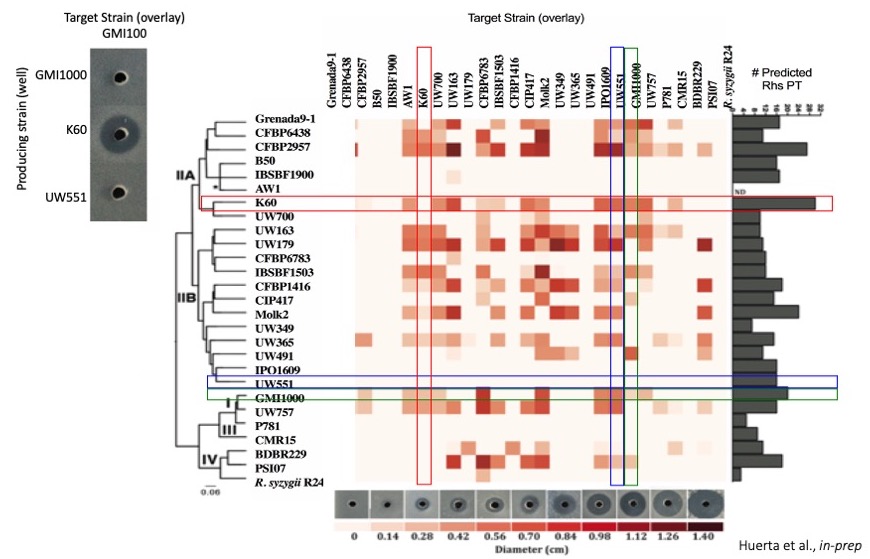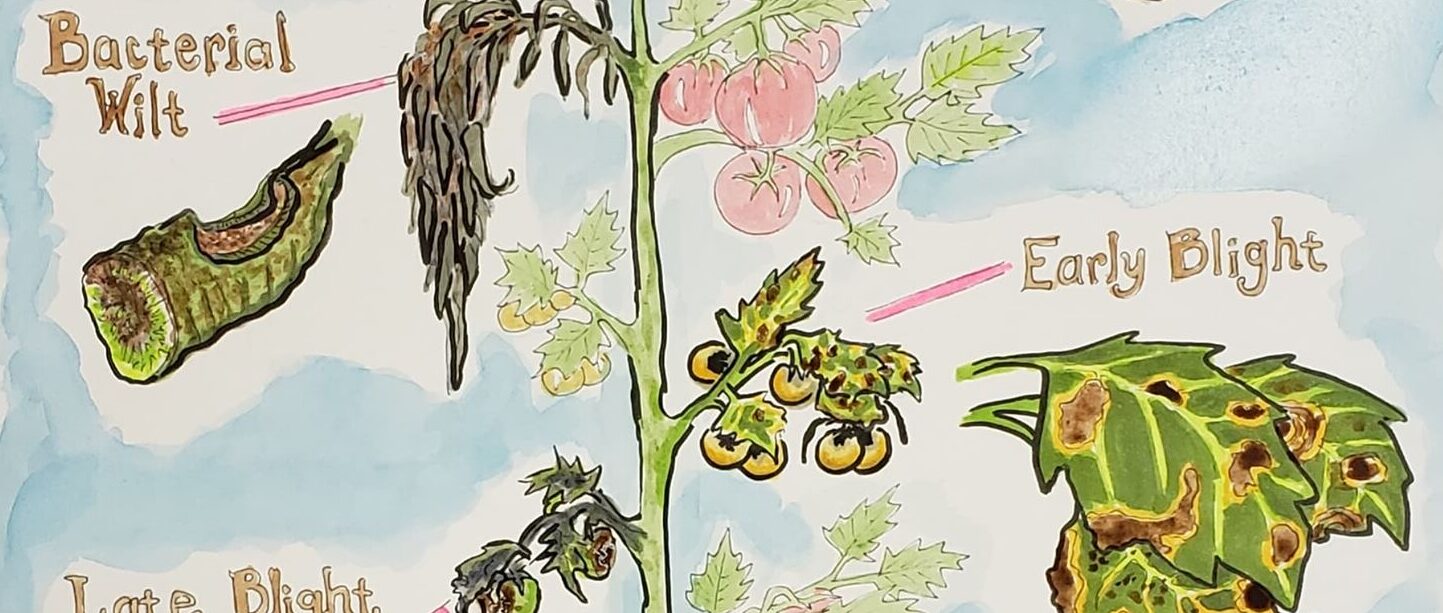A systems level approach to investigate the biology, ecology and evolution of plant associated bacteria in the context of niche specialization and competition: Prior to infection, most phytopathogenic bacteria exist as epiphytes and must successfully compete against other microbes for both space and resources. This competition is an important factor driving microbial ecology and evolution with potentially significant impacts on agricultural productivity. Allelopathy, defined as the suppression or death of one organism due to the toxic chemicals excreted by another organism, is a ubiquitous phenomenon within microbial communities, and thus impacts competition outcomes. In bacterial assemblages, an agent of allelopathic interactions are proteinaceous toxins (i.e bacteriocins and toxin-antitoxin systems).
With narrow activity spectrum, proteinaceous toxins play important roles in intra and interspecies competition among bacteria occupying the same ecological niche. Proteinaceous toxins-producing strains have been successfully exploited as food preservatives in the food industry and their role in biological control has been investigated with promising yet inconsistent results for plant disease management. With improved biotechnological and genomic tools we are now able to advance the potential application of proteinaceous toxins to agricultural systems.
In the Huerta Lab we investigated the biological function and genetic basis of different proteinaceous toxins produced by multiple bacterial genera and how these may mediate intraspecies competition among geographically and genetically distinct strains.

Figure 1.Inhibition and sensitivity matrix of 27 diverse R. solanacearum strains. Agar plates were overlaid with a suspension of the target R. solanacearum strain (shown in the horizontal list) in molten agar. Wells in the plate were filled with 30 μl of cell-free supernatant from overnight cultures of the producing R. solanacearum strain. Producing strains are shown in vertical list at left, with a whole-genome phylogenetic tree showing relationships among strains. *The phylogenetic position of strain AW1 is based on egl sequence, as no genome sequence is available for this strain. The diameter of each growth inhibition zone was measured using ImageJ. The color in each square indicates the mean inhibition zone diameter as shown in scale bar at the bottom. Results shown are from two experiments, each containing two technical replicates. Gray horizontal bars on right indicate the number of predicted rhs-repeat-containing genes in the genomes of the corresponding strain. ND, indicates not determined due to lack of access to strains genome.
Huerta, A. I., Milling, A., & Allen, C. (2015). Tropical strains of Ralstonia solanacearum outcompete race 3 biovar 2 strains at lowland tropical temperatures. Applied and Environmental Microbiology, 81(10), 3542-3551. Doi: 10.1128/AEM.04123-14
